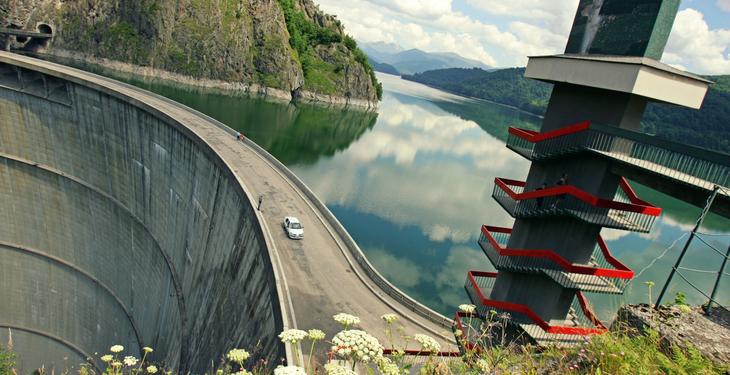Hidroelectrica estimates that it has achieved a gross profit of more than one billion and a half lei last year, the best result registered by the company since exit from insolvency, said Bogdan Badea, the general manager of the energy producer, while announcing the re-launch of the tender public for the Vidraru Hydropower Facility refurbishment project.
“For us, 2017 was a year of challenges, it was a dry year and the market conditions were favorable at times. It was a complicated year because the energy production was lower,” Badea said, quoted by Agerpres.
According to him, during the first semester the company made only 30% of the budgeted investments, for various reasons, such as organizational or legislative constraints. However, in the second half of the year, the investments were made at 90% of the budgeted amount, so the total value of the indicator reached 62% for the whole year.
On February 17, 2018, Hidroelectrica launched the international public tender for Vidraru Hydropower Refurbishment Project. The procurement documentation was endorsed by the National Agency for Public Procurement (ANAP) and published in SEAP under number 182737.
The estimated value of the contract to be awarded as a result of the public procurement procedure amounts to EUR 78.9 million (excluding VAT), to which a maximum of EUR 1.7 million of unforeseen expenditure can be added. The work will be conducted by the winning firm for four years and eight months after the award date. The final date for submission of bids for the acquisition of “AHE Vidraru Refurbishment” is May 15 this year.
Thus, more than 50 years after its commissioning, Vidraru’s hydropower facility is about to enter a new life cycle estimated at least 30 years. The works are aimed at increasing the active power of each hydro-aggregate from 55 MW to 58.8 MW at least, while ensuring better reliability, lowering the maintenance needs and increasing safety in operation. Also, the completion of the works will allow the integration of all the already modernized installations (220 kV station, AMR Vidraru Dam, 125 kVA Vidraru Dam Group) in the new SCADA control and control systems.
Investments, refurbishment and maintenance are at the heart of Hidroelectrica’s concerns: “It is a particularly favorable moment for our company to make investments. Year 2017 was a profitable one, and this year starts with a structural and financially consolidated Hidroelectrica. We want to build on this solid base. Our strategy aims at sustainable long-term development. Hidroelectrica has a heavy word to say among the companies in the energy system. We are still at the beginning of the road to demonstrate what we can do. The resumption of the Vidraru Refurbishment bid is just a first step in this line, strengthening the company’s position and implementing a new business philosophy”, said Bogdan Badea.
The resumption of the auction is subject to a reduction of approximately EUR 3 million in the sum of the previous general estimate. The specifications in the tender specifications have also been updated with those provisions resulting from the clarification requests and the responses given by the tenderers in the course of the procurement procedure previously carried out and canceled.
“The documentation for the Vidraru works is now adapted to the new legislation, and the requirements in the specification are much more flexible. We’ve worked a lot on optimization, and this gives more companies the opportunity to come forward with the latest cutting-edge technology. We want to give a new life to Vidraru’s entire hydropower facility. We are focusing on enhancing overall efficiency, but also on the integration of state-of-the-art technologies: automated control systems to manage the process of producing energy remotely without permanent staff at the underground operation station”, Badea said.
Vidraru Hydroelectric Power Plant is the most important objective in the administration of the Curtea de Argeş Hydropower Branch. Built between 1961 and 1966 on the Argeş River, the Vidraru Hydro Power Plant was designed to operate predominantly at peak load, with an installed 220 MW power and a yearly average energy output of 400 GWh.
